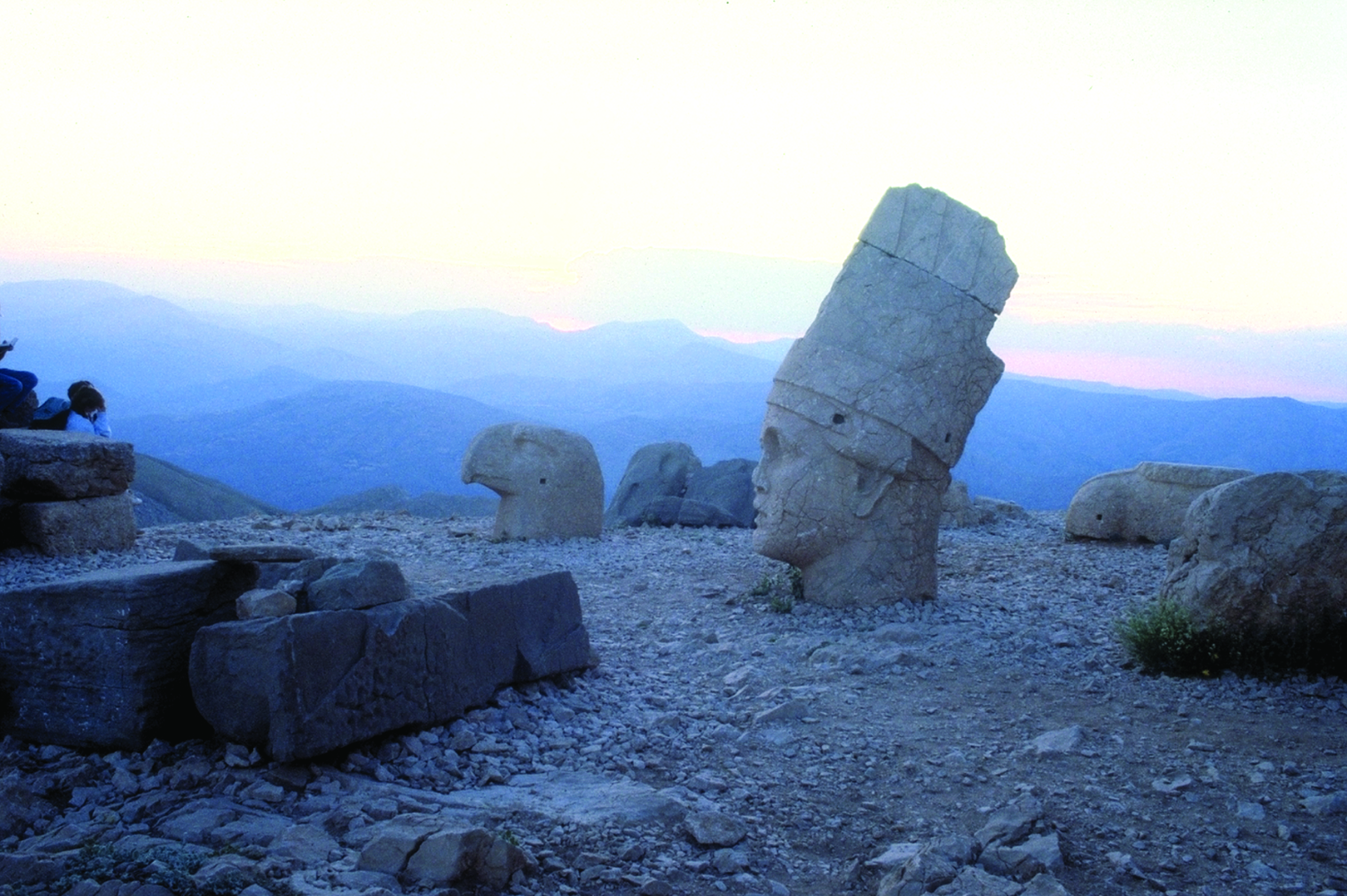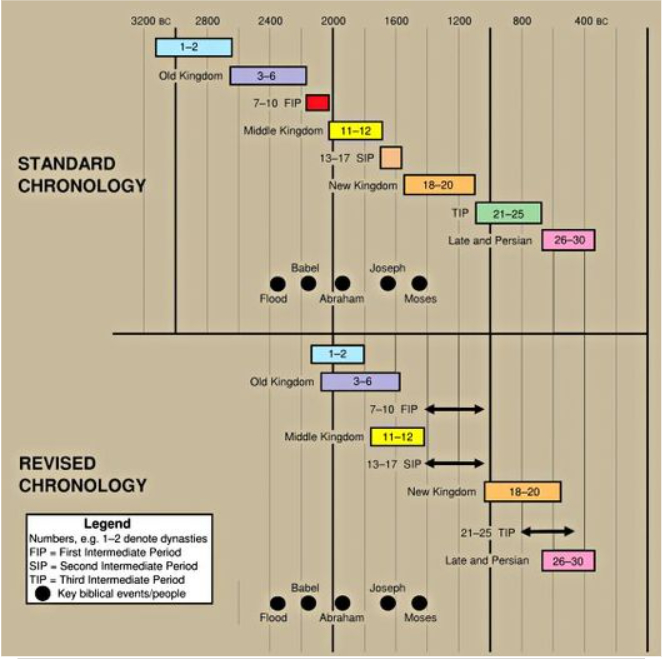Disclaimer: How biblical chronology relates to archaeological periods in the ancient Near East (e.g., Paleolithic, Chalcolithic, Early Bronze Age, Iron Age, etc.) is a complex subject. For many years, Creation Ministries International (CMI) has published a range of views by various authors in its publications (CREATION.com, Journal of Creation, Creation magazine, etc.). These views do not necessarily agree with the present views of CMI’s writers on this topic, but remain available online as they form part of CMI’s historical archives of its publications. For key articles about this subject see our Archaeology Q&Ahaeology Q&A.
Timing is everything
A talk with field archaeologist David Down

A couple of years ago, archaeologist David Down (pictured below) was excavating among a semi-circle of ancient stones in Israel when he heard a scream. Reeling around, he saw one of his volunteers with her leg disappearing down a hole.
David has been digging at archaeological sites in the Middle East for about 20 years, so he was well able to handle the situation.
‘We jumped to rescue her,’ he explained, ‘but I must confess I was more interested in the hole!’
David has made many discoveries about the reliability of the Bible. Recently, he wrote a ground-breaking book about the pharaohs of the Bible,1 connecting Egyptian archaeology with biblical chronology.
In true archaeological fashion, David was soon lowering himself through the opening into a dark, clammy tomb.
‘I was the first person in that tomb for 2,300 years! I thought tomb robbers would have taken everything but it was intact.’
A sprightly 86 years old, David digs with the best of them. At home, he still plays tennis three mornings a week before starting his work.
As a field archaeologist, David began digging as a volunteer in Israel. ‘Gradually I worked my way up. Most archaeologists in Israel are not academics. After they got into archaeology they studied and gained experience.’
David also edits Archaeological Diggings,1 a full-colour bi-monthly magazine of ancient history and archaeology. ‘Mine is one archaeological magazine that supports the Bible’, David explained.
‘Other archaeological magazines, such as Biblical Archaeology or Biblical Archaeology Review, have the word ‘biblical’ in their name, but their articles do not necessarily support the accuracy of the Bible.’
How it all began

David’s passion for archaeology started when his uncle asked him to a public meeting in Melbourne, Australia, during World War II.
‘It was in a theatre so I thought it was a political lecture’, David recalled. ‘But when they began with prayer and took up an offering I wondered what I was getting into. Quite frankly, if I hadn’t been with my uncle I would have left.’
For the first time in his life, David heard of Nebuchadnezzar, king of Babylon, and his dream about a statue with a gold head and silver arms as recorded in the Bible (Daniel 2). But David was sceptical. ‘I thought, “What is all this about Babylon and Medo-Persia?” I thought he was “having us on”.’
So David went to the public library and, sure enough, Babylon and Medo-Persia were there! His interest was aroused. He attended the other lectures; through these, he was converted to faith in Jesus Christ.
From then on, David thought it would be great to visit Babylon and see it for himself. ‘I had an ambition to see the Bible lands—Jerusalem, Bethlehem, Nazareth and Galilee, and of course, especially Babylon and Nineveh. I’d been converted largely because of the reliability of the biblical history of these lands, so I wanted to see them.’
His opportunity came in 1958 at the end of his first term as a missionary in India. Instead of returning home to Australia, he journeyed by car and caravan to the Bible lands.
With his wife and four children, the youngest under one year old, they journeyed through Pakistan, the Khyber Pass into Afghanistan, then Iran and Iraq, eventually arriving at Babylon. ‘We were the only ones there’, David reflected. ‘The Bible says Babylon will be “completely desolate” (Jeremiah 50:13). And there we were, just us alone, camped in desolate Babylon.’
They were seven and a half months on that journey but by the time he got home David was already planning the next tour!
Discovering problems
In those days, the popular opinion among Christians was that archaeology proved the Bible true. However, most did not realize that by the 1960s, the secular archaeologists were telling a story that conflicted with the Bible. David discovered this when he was teaching archaeology at a Christian college in Australia.
‘I was researching the history of Egypt and found that Amenhotep II, by the standard Egyptian chronology, was the pharaoh ruling at the time of the Exodus. Now I had been to Egypt and seen the mummy of Amenhotep II in the Cairo Museum.’
David realized that it shouldn’t be there. ‘If he was the pharaoh of the Exodus, he should have been at the bottom of the Red Sea’ (Exodus 14:5–9, 28).2
David asked a top Christian archaeologist in America, Dr Siegfried Horn, what he should teach his class. ‘I’m sorry,’ Horn wrote back, ‘but I don’t have the answer. Do the best you can.’
Another problem David discovered involved King Solomon. Archaeologists don’t find a period of affluence at the time Solomon was supposed to live. Instead, they find poverty.
‘This is where the problem is’, David explained. ‘If you dig down to what they call “Iron Age IB”, you find only shoddy-looking pottery. There’s no evidence of powerful cities or walls or fortifications or anything like it. There’s no jewellery.’
Today, secular archaeologists are vigorously attacking the story of Solomon, saying there’s no evidence to support, but plenty of evidence that contradicts, his existence. ‘If Solomon is a fake story, then what parts of the Bible can you trust?’
David knew there had to be answers to these problems but for two years he couldn’t find them. ‘I knew the Bible was right, but I had to admit that there was a problem.’
Doesn’t carbon-14 dating disprove the Bible?
‘I’ve used carbon-14 dating’, David chuckled. ‘Frankly, among archaeologists, carbon dating is a big joke. They send samples to the laboratories to be dated. If it comes back and agrees with the dates they’ve already decided from the style of pottery, they will say, “Carbon-14 dating of this sample confirms our conclusions.” But if it doesn’t agree, they just think the laboratory has got it wrong, and that’s the end of it. It’s only a showcase. Archaeologists never (let me emphasize this) never date their finds by carbon-14. They only quote it if it agrees with their conclusions.’1
Reference
- The same is true in geology. See Walker, T., The way it really is: little-known facts about radiometric dating, Creation 24(4):20–23, 2002.
Chronology central
Then one day he discovered The Exodus Problem and Its Ramifications by Dr Donovan Courville. This book pointed out that the chronology of Egypt needed to be reduced. ‘It was like turning the light on’, David beamed. ‘I could see that was the answer!’ From then on, he became a dedicated devotee of the ‘revised chronology’ of Egypt.
‘For a long time, Egyptian chronology was, for the archaeologist, a “cut and dried” thing’, David explained. ‘It was allegedly supported by the Sothic cycle and archaeologists claimed the dates were “astronomically fixed”.’
David expanded, ‘You get the impression that there were eclipses that synchronized with Egyptian history, proving that the dates are correct. But the Sothic cycle has nothing to do with eclipses.’
David tried to explain, ‘The Sothic cycle is a weird and wonderful thing. Some statements in Egyptian history speak of the rising of Sothis but from there on, it’s all conjecture. What is Sothis? Is it Sirius? Venus? There’s no agreement on that. What does “rising” mean? When it comes above the horizon? It’s all speculation, but because it apparently supports their dates, most archaeologists just accept it.’
David raised his eyebrows, ‘In fact, most archaeologists couldn’t explain the Sothic cycle. But they won’t question the Egyptian dates because they think they’re “astronomically fixed”.’3
‘The reason for shortening the Egyptian chronology’, David explained, ‘is overlapping dynasties.’
‘No archaeologist will deny that some dynasties are contemporary. In fact, there’s one place in the Third Intermediate Period where even Kenneth Kitchen, the biggest authority on the period, recognizes that there were four dynasties ruling at the same time.
‘So it’s not a question of “Were any dynasties contemporary?” The question is “How many and for how long?” There were many more dynasties contemporary than previously recognized.’
David explained that the archaeology in Israel is related to Egypt, and has no chronology of its own. ‘So if you find a piece of pottery in Israel that has an inscription related to a pharaoh, then you give it the same date as the pharaoh. But if the date of the pharaoh is wrong, then the date of the pottery in Israel will be wrong, too. There’s the problem.’
Hittites: a problem for conventional chronology solved by the biblically revised chronology

‘Most archaeologists realize the Egyptian chronology has problems which they’d rather “pass over”’, said David. ‘Take for instance, the Hittites.’
Like Israel, the archaeology of the Hittites has no chronology of its own. There are a number of synchronisms between the Hittites and Egypt, so Hittite dates are assigned on the basis of Egyptian chronology. However, you have a third member of a triangle, the Assyrians.
David outlined the problem. ‘According to the Egyptian chronology, the Hittites were wiped out in 1200 BC, but the Assyrians write of wars against the Hittites in the eighth and ninth centuries BC. What were the Hittites doing 500 years after they were wiped out? The archaeologists talk about an “afterglow”, whatever that means. Not only are the Assyrians making war against the Hittites in the eighth and ninth centuries, but they war against kings with the same names as recorded in Hittite records 500 years before.’
But the problem gets worse. ‘When I visited Hittite sites in Turkey last year, I could see it in the artefacts. Here is one artefact from the Old Kingdom and another from the later period. But they’re exactly the same. We all know that artefacts change because styles change. But these artefacts were the same. One was dated by its connection with Egypt and the other 500 years later by its connection with Assyria.
Archaeologists know about these problems but they like to keep them buried. But to David Down the issues are exciting because the biblically revised chronology (see main text) solves the problems.
Evidence fits beautifully
David found that once the chronology of Egypt was shortened, the evidence fitted beautifully. ‘The reason they find no evidence for Solomon is because they are looking in the Early Iron Age, which is the wrong place. But there is abundant evidence for Solomon’s splendour in the Middle Bronze period.’
David expanded, ‘In that period you have beautiful pottery made on fast wheels. You have bronze instead of plain copper. There were so many innovations, so much prosperity, including beautiful, well-built cities. Any archaeology book will tell you that Middle Bronze II was the period of greatest affluence, the greatest power that’s ever been known in the Middle East. That is Solomon’s period by the revised chronology.’

David also finds lots of evidence for Joseph, who lived at the time of Sesostris I. ‘He was a decent pharaoh’, David mused. ‘You can see his statue in the Cairo Museum—nice-looking chap.
‘Then, when you come to the time we recognize as the period of slavery, you’ve got Sesostris III, a nasty-looking character—the “new king over Egypt, who did not know Joseph” (Exodus 1:8). This was the 12th Dynasty.’
David is not alone in archaeological circles in saying that the standard Egyptian chronology needs drastic revision. For example, he mentions David Rohl, who wrote a book called Test of Time (USA title: Pharaohs and Kings).
David thinks his familiarity with the Bible and the revised chronology gives him an advantage over other archaeologists. ‘In the field,’ he explained, ‘I may find something and immediately it clicks, because I know the Bible, and can align the object chronologically. So, even though I’m excavating with Jews, they’re not as familiar with the Bible as I am.’
He recalls the apprehension he felt when writing his latest book, which interprets the history of Egypt within the new framework. ‘I knew the standard chronology was wrong, but initially I didn’t dare try to put the pharaohs in the right place.
‘But then I started with the Exodus and Solomon and found that kings of the various dynasties fitted in nicely. It’s so exciting.’
David sees his work as vital for defending the Christian faith. ‘If you are going to say that the Bible is wrong on history, where do you stop?’
‘The battle is all about chronology’, David enthused. ‘By the standard chronology there is no evidence for the biblical record back beyond 700 BC. But by the revised chronology there is plenty of evidence. It all fits so beautifully.’
The revised Egyptian chronology

The standard Egyptian chronology extends beyond 3000 BC. This requires that Noah’s global Flood occurred during the Old Kingdom. Also, Joseph is placed in Egypt during the Second Intermediate Period but there is no sign of him then. And Moses is placed in Egypt in the New Kingdom but the devastating plagues and the destruction of Pharaoh and his army in the Red Sea had no effect on the grandeur of that kingdom.
By recognizing contemporary dynasties, the revised chronology dramatically collapses the timescale and harmonizes with biblical chronology. The First Intermediate Period is the same as the Second Intermediate Period and corresponds to the time of Joshua and Judges. The Third Intermediate Period also disappears, its kings matching with kings of the New Kingdom and the Late and Persian Periods.
Thus, Egypt was settled after the Flood and after the dispersion at Babel (by descendants of Mizraim, Genesis 10:6, from which we get Misr, the present Egyptian name for Egypt). Abraham visited Egypt during the Old Kingdom and Joseph was in Egypt during the Middle Kingdom. The Exodus of Israel from Egypt overturned the Middle Kingdom and brought a period of desolation across the once majestic land.
References and notes
- Contact Archaeological Diggings (Australia) for publishing details, editor@diggings.com.au
Phone: +61 2 9477 3595. Return to text. - See also David’s article, Searching for Moses, Journal of Creation 15(1):53–57, 2001. Return to text.
- See also Mackey, D.F., Fall of the Sothic Theory: Egyptian chronology revisited, Journal of Creation 17(3):70–73, 2003; based on his M.A. thesis from the University of Sydney in Australia. Return to text.


Readers’ comments
Comments are automatically closed 14 days after publication.